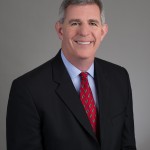As a part of our talent acquisition engagements, we ask our clients how they define “top talent” and how they would assess those traits in the interview process. Reflecting on the insightful comments we hear every day, we thought there would be great value in a new blog in which senior executives/thought leaders share their “Take on Talent.”
This is the sixth in a series of blogs/interviews with senior executives who are thought leaders in the areas of Talent Acquisition, Career Development and Leadership who will share their perspectives on this ever present question.

Peter Bendor-Samuel founded Everest Group in 1991 with the vision to assist the then nascent out sourcing and global services industry to evolve more powerful and effective mechanisms to create and capture value. Everest Group is now a leader in the global services industry, and is constantly at the intersection to show other firms how to take advantage of disruptive technologies, innovative service vehicles, and game-changing talent models.
Peter is the author of the industry best-selling book, “Turning Lead Into Gold: the Demystification of Outsourcing.” He is a regularly featured thought leader in international business media including the Wall Street Journal, New York Times, and Financial Times, and is a frequent keynote speaker at various industry events. Continue reading





 s Development Manager (CBDM) will be responsible for identifying and closing new enterprise accounts in addition to managing the customer relationship. Our client offers global professional services, managed services, cloud, data center, security, and IP services. The Client Business Development Manager will provide valuable insights and recommendations to support the client’s strategic initiatives.
s Development Manager (CBDM) will be responsible for identifying and closing new enterprise accounts in addition to managing the customer relationship. Our client offers global professional services, managed services, cloud, data center, security, and IP services. The Client Business Development Manager will provide valuable insights and recommendations to support the client’s strategic initiatives. Effectively managing people is difficult, and no one is born knowing how to do it. Fortunately, management can be learned. We suggest following these four steps, which are simple, but time tested:
Effectively managing people is difficult, and no one is born knowing how to do it. Fortunately, management can be learned. We suggest following these four steps, which are simple, but time tested:
 by Michael Schrage
by Michael Schrage